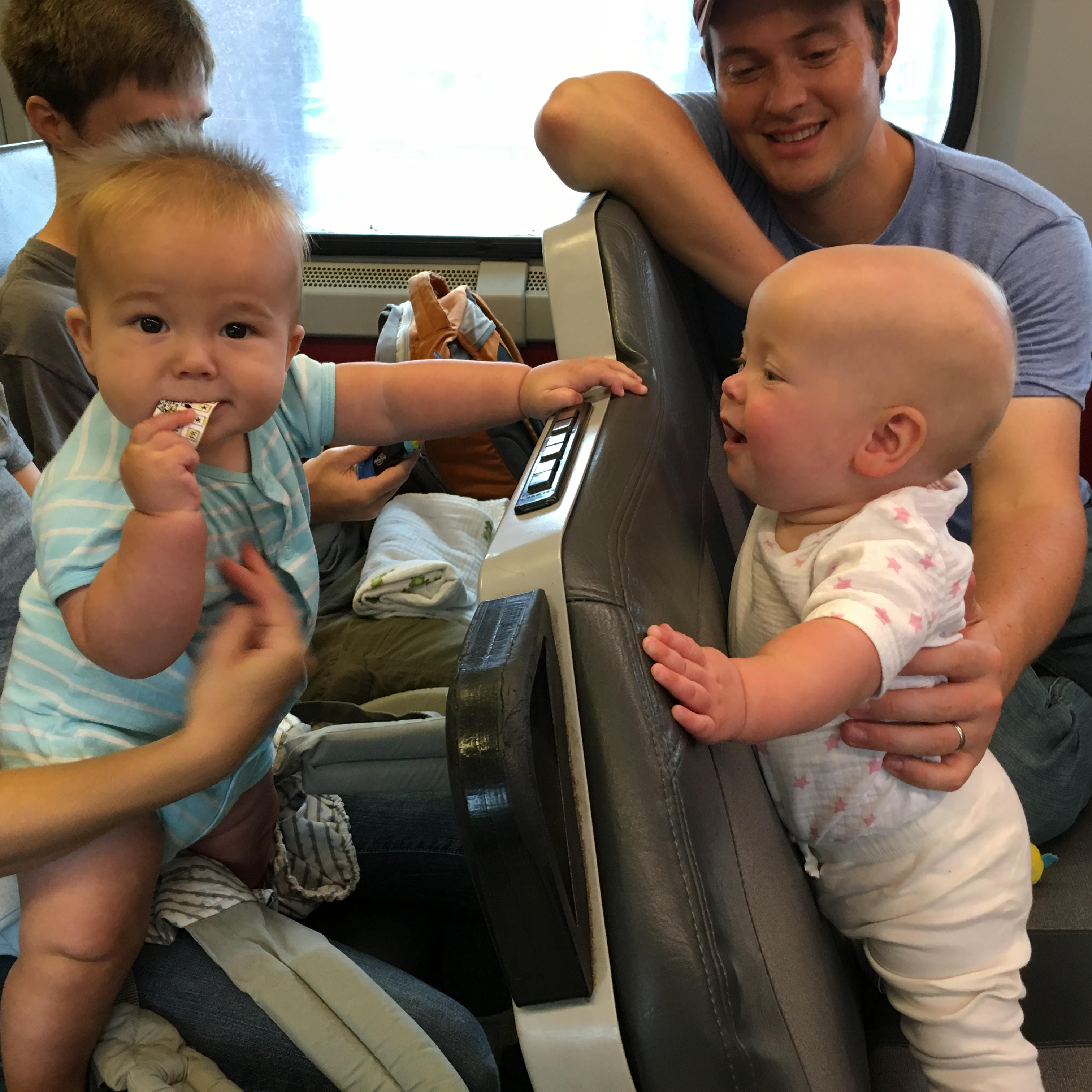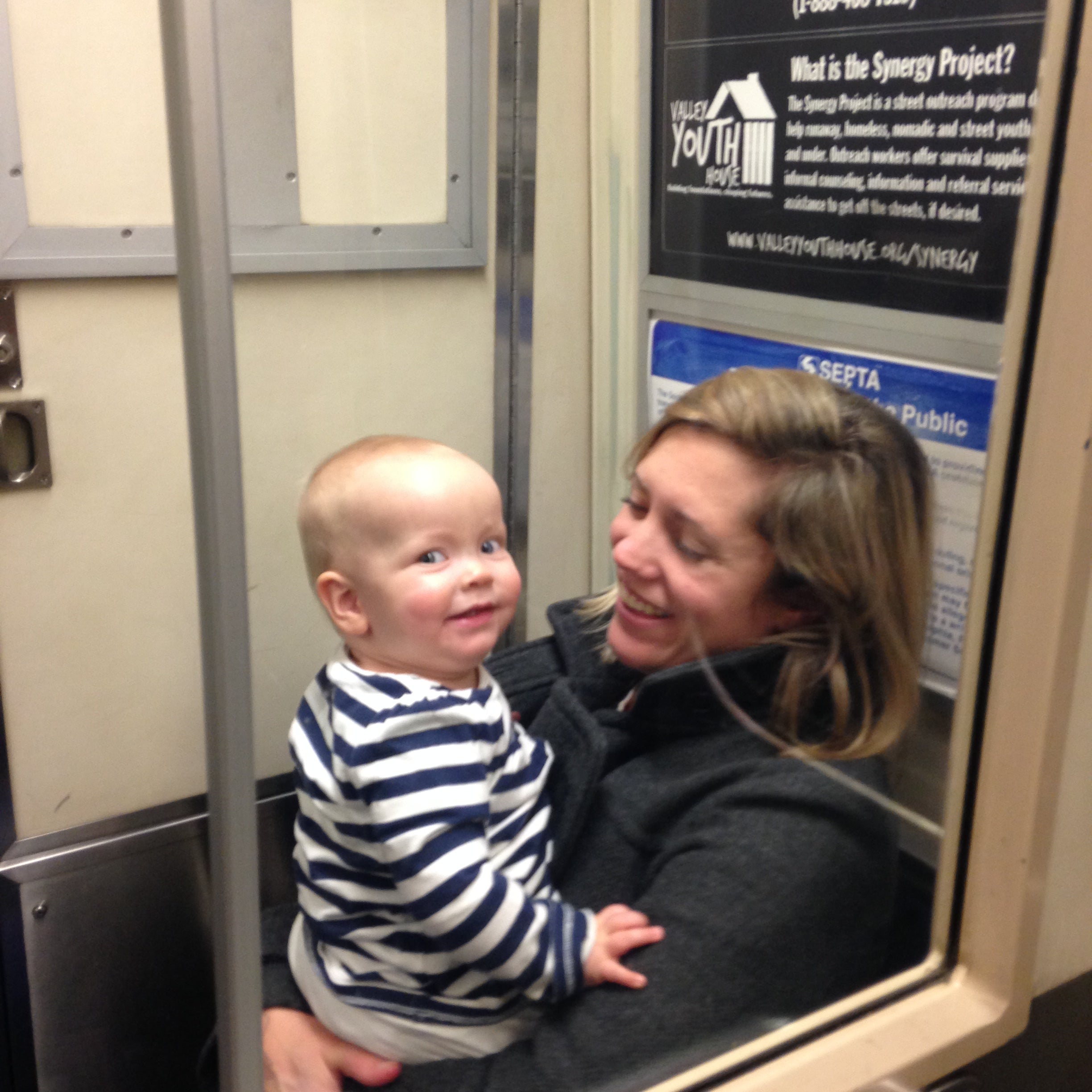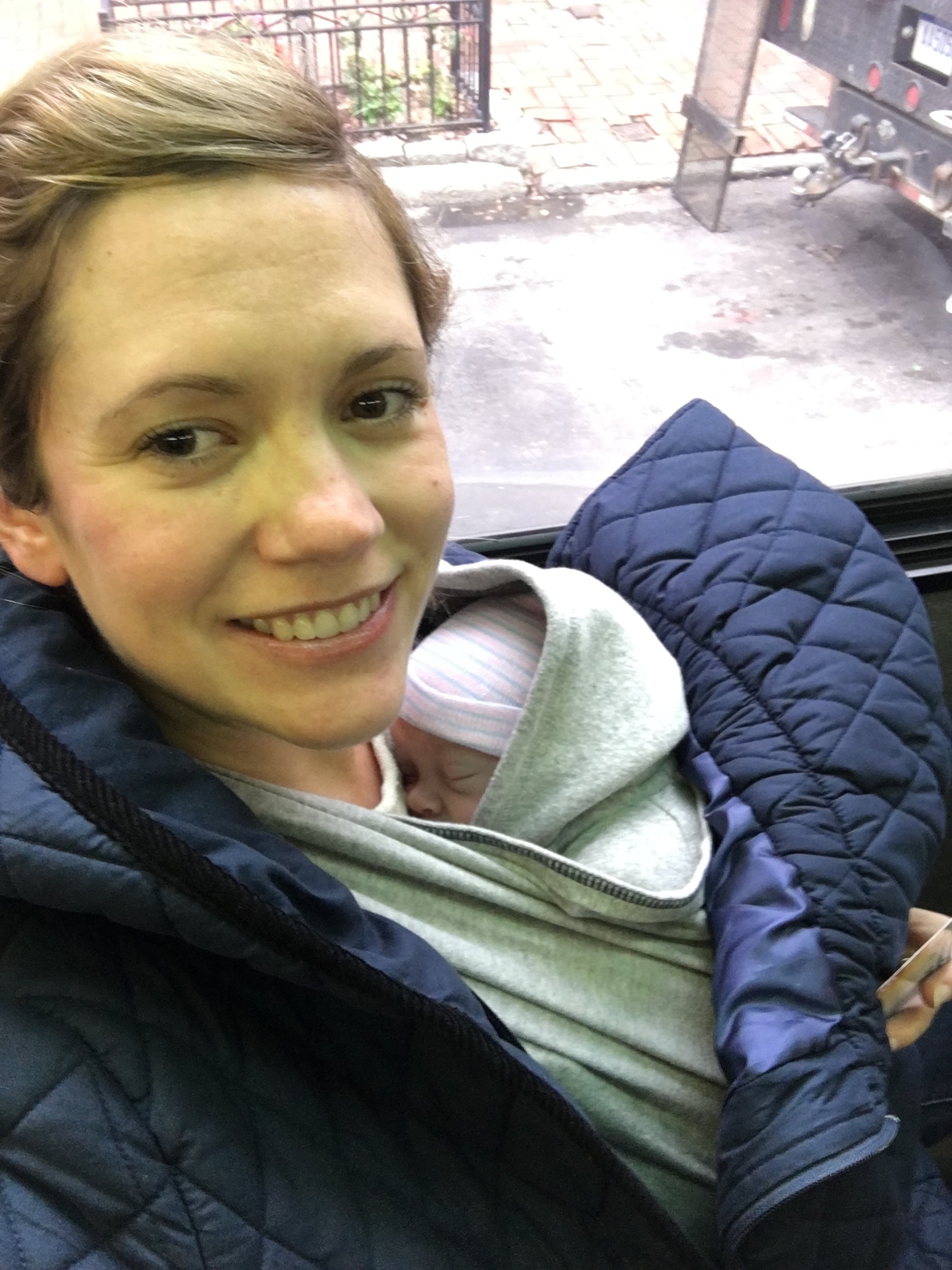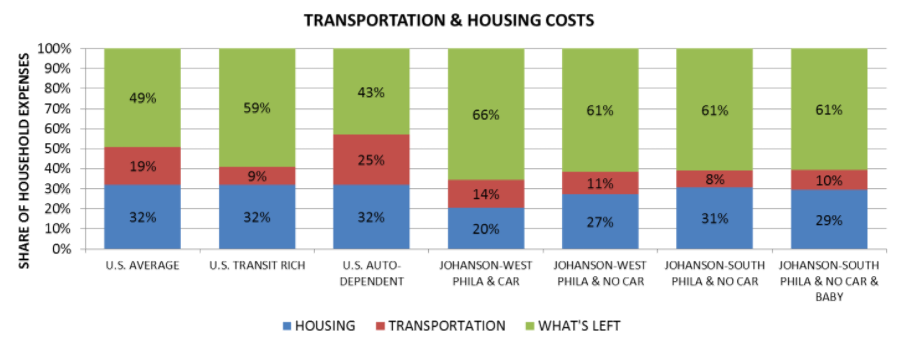Car-free in Philly: Living well without a car, with a baby

In August 2015, Community Contributors Katy and Erik Johanson shared with us what their household gained by going car free. Now they’re back with an update on what car-free living has meant for their family since having a child.
Back in 2015, we penned a piece for Eyes on the Street about the real and measured financial benefits of living car-free in Philadelphia. For the Johanson household, a marital commitment to financial transparency had led to a rich source of data that could be used for year-to-year spending comparisons. As we tracked spending, trends emerged, which were especially interesting in the context of major life changes, such as selling our car (2013) and moving from walkable West Philadelphia to super-walkable South Philadelphia (2014).
As we recounted in 2015, the most eye-opening trend stemming from our move and decision to live car free was a dramatic reduction in our transportation costs. Compared to the average American household transportation cost share of 19%, we were already doing well at 14% living in West Philadelphia with a car. When we sold the car, that cost share dropped to 11%. When we moved to South Philadelphia, the cost share dropped to 8%, a percentage point better than the American average for “transit rich areas”. We concluded that these savings represented dividends from Philadelphia’s density and easy-to-navigate urban core – effectively a household stimulus with real economic consequences for our family.
We received much positive feedback on the piece, but at least one skeptical critique – “just wait until you have kids.” Some commenters thought the car-free lifestyle worked for urban “DINKS” (double income, no kids) but would never work once babies were in the mix. Well, we didn’t mention it at the time, but when the piece was published Katy was already six months pregnant. Ally Jane was born on Christmas Eve, 2015. Now that we’ve celebrated Ally Jane’s one-year birthday, we are pleased to update the PlanPhilly community on our household transportation costs for 2016 – a full year without car, with baby.
In short, our household transportation cost share increased as a percentage of total household spending from 8% in 2015 to 10% in 2016 – still within range of the 9% American average for “transit rich areas”. We anticipated such an increase and budgeted for it, figuring that with an infant there would be more car share trips around town to places like church and the grocery store, and out-of-town where train and plane travel would be less practical.
While we planned ahead for a bump in household transportation costs, we were still way off about the source of that increase. Most things, we found, are still walkable and we made stroller investments accordingly – for example, a compact umbrella model for transit and an all-terrain model for city sidewalks (we counted these purchases as “transportation” costs in our budget). Groceries are easily carted or hung from stroller handlebars. Our pediatrician and pharmacy are within walking distance as well.
Our tips for car-free living with a baby
It also turns out our little outgoing urbanist baby loves waving to people on the bus, subway, and train, and actually seems to harbor an intuitive dislike of cars, if the frequent wailing from the backseat is any indication. Mom and dad also prefer transit because it is easier to more immediately attend to Ally Jane’s needs in a stroller or carrier as opposed to strapped in a car seat.
But the baby wasn’t actually the reason transportation became a little more expensive for us in 2016. That came from commuting to work without the baby. With Katy working 10-hour shifts starting at 7:00 a.m., we found that the logistics of getting everything ready for the day and out the door to make a 6:30 a.m. crosstown bus was often too daunting to be an everyday option. Minutes matter when you have an infant, and the ability to call on a ride-hailing app for a door-to-door trip at 6:45 a.m. was an indispensable – albeit more expensive – option to preserve our car-free lifestyle. This affirms a growing body of research that demonstrates transit and ride-hailing as complementary systems.
Like last year, our conclusion is cloaked in caveats. We understand that car-free city life is not for everyone, and there are many places and circumstances that would render it impractical. That said, after a year of car-free living with a baby, we also believe there are many people for whom it is practical, but because of either force of habit or cultural norms haven’t given it enough consideration.
For us, the thousands of dollars we’ve saved – even with an increase in ride-hailing – has provided the financial flexibility to kick-start a college fund and still save some for retirement. It’s an expensive area of household spending often taken for granted and it is at least worth a second look – even with a little rug rat crawling around the living room.
WHYY is your source for fact-based, in-depth journalism and information. As a nonprofit organization, we rely on financial support from readers like you. Please give today.








